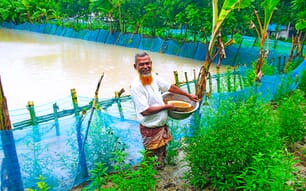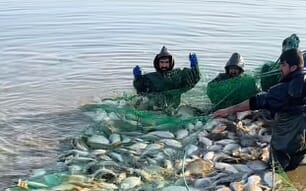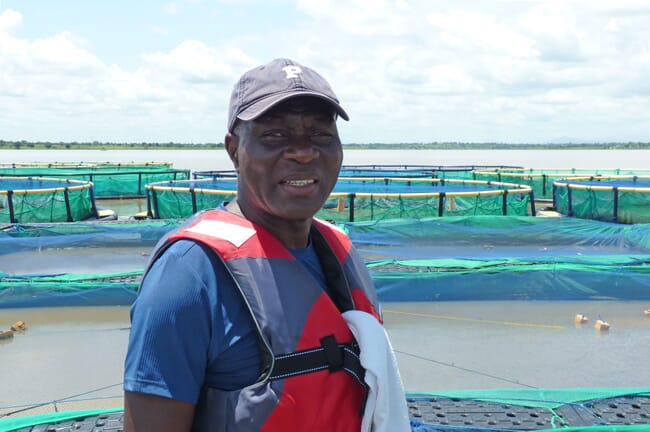
With only 25,000 tonnes of fish produced domestically, Togo currently imports 80,000 tonnes of seafood to fill the gap in demand. However, many Togolese are now beginning to appreciate locally produced organic tilapia, following concerns about imported fish from Asia and other parts of the world.
This could be good news for the country’s fish farmers, and it is certainly inspiring one of the country’s most prominent producers, Lofty Farm, to expand.
Covering 80 hectares, the farm is located beside the Nangbéto Dam, about 145 km from the capital, Lomé, and currently produces between 1,800 and 2,000 tonnes of organic tilapia annually.
"The farm's goal is to achieve a production of 2,500 tonnes of tilapia by 2024 and 5,000 tonnes in 2025. I am currently producing over 95 percent of the national production of organic tilapia," says Pierrot Kokou Akakpovi, who is the farm’s CEO and widely know as “the king of organic tilapia”.
"This figure represents only over 7 percent of the country's fish needs. So, I am planning to increase my production by up to 30 percent if all goes well in the future,” he adds.
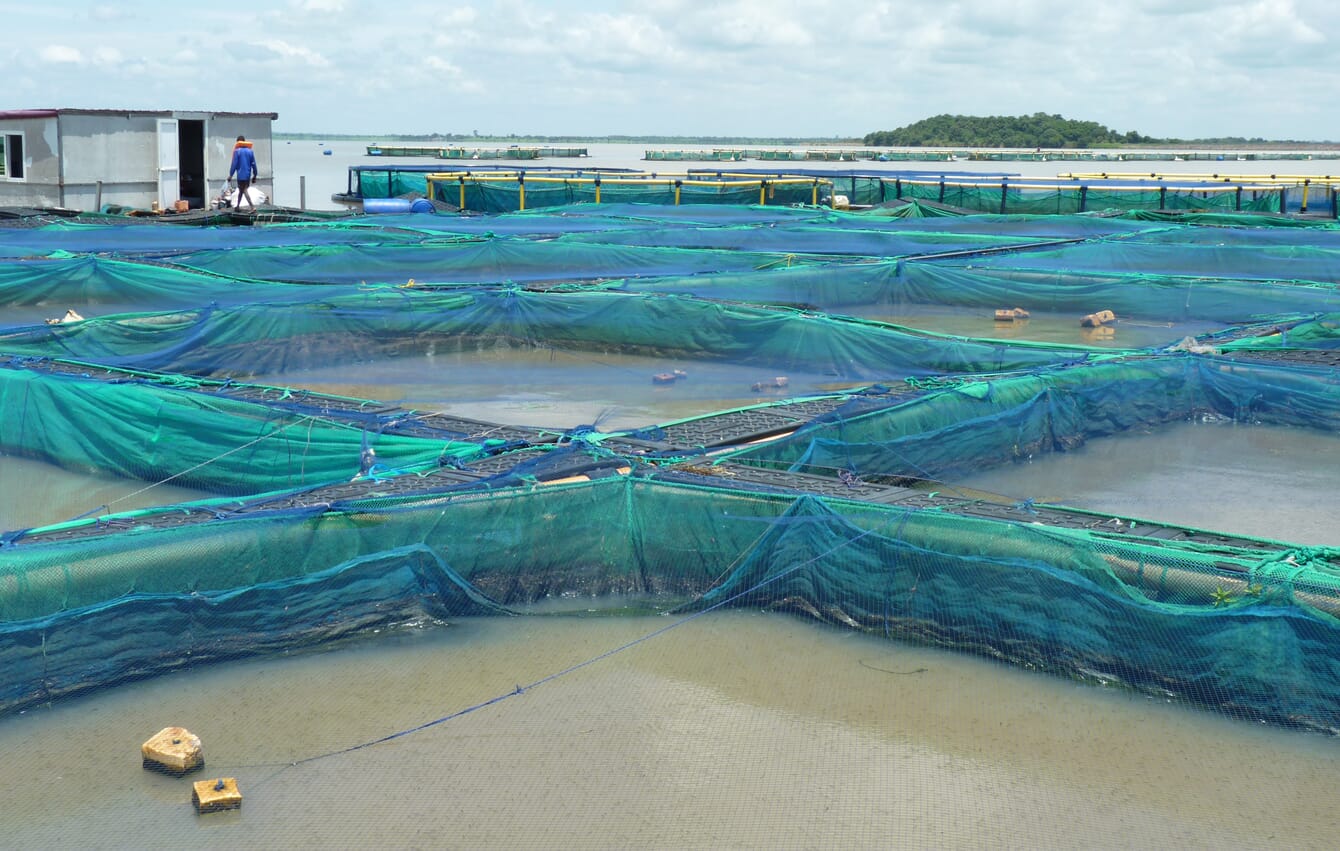
Covering 80 hectares, the farm is located beside the Nangbéto Dam and currently produces between 1,800 and 2,000 tonnes of organic tilapia annually
Lofty Farm was established in 2017, through the creation of ponds that are fed by fresh water from Lake Nangbéto.
Arnold Akakpovi is the farm's manager: "We have enough oxygen, which is good for tilapia. We have a pH which is gentle for tilapia,” he says.
The farm has a supply of bottled oxygen on site which is connected to the ponds of fingerlings by flexible hoses, a technology that many fish farms in the region do not have.
Before being a successful fish farmer, Akakpovi worked in the mineral water and renewable energies sectors.
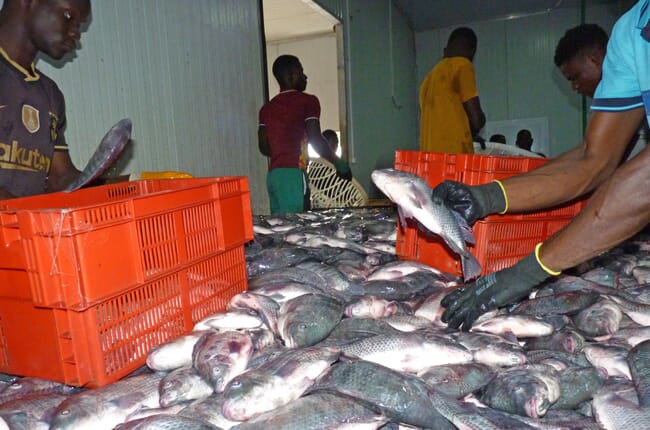
Akakpovi's company has created over 280 direct jobs and 1,000 indirect jobs in Togo
However, in 2017 he started farming tilapia in Kpessi, on Lake Togo, before losing the entire farm in a flood in the same year. The disaster cost him $650,000, but he then relocated to Lake Nangbéto the following year.
“It is fresh water all year round. Sometimes in rainy season, the water is cloudy, however, it is a fish paradise throughout the year compared to Lake Togo, where the water becomes brackish in the rainy season," he says – referring to the incursion of seawater from the Atlantic into the lake during times of heavy rains and high tides.
Akakpovi now claims to be able to listen and talk to tilapia.
"Yes. Sometimes I listen to them and know what they want,” he enthuses.
The company has created over 280 direct jobs and 1,000 indirect jobs and he advises young people wishing to venture into the sector to be passionate about fish.
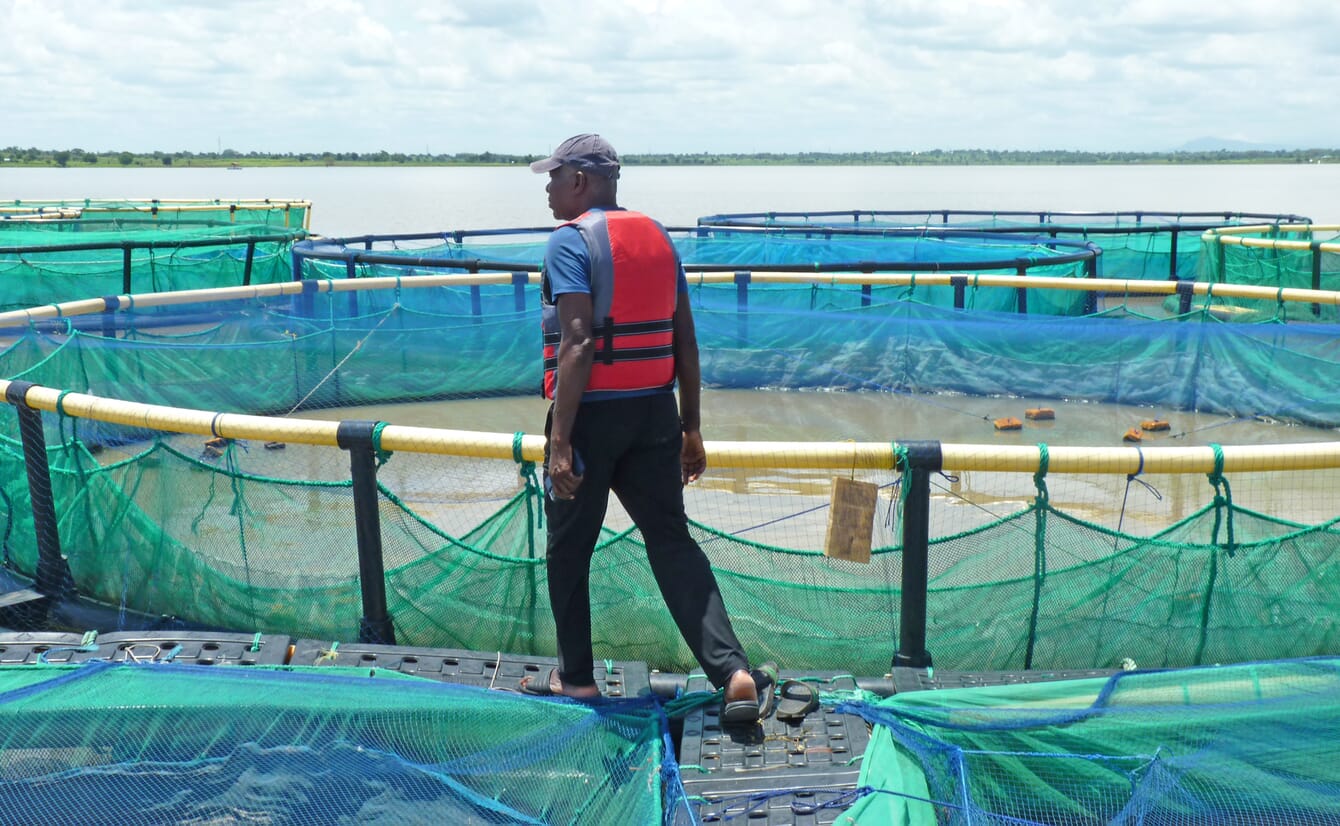
The fish are transferred from ponds into cages, where they are fed until they reach an average harvest weight of 500 grams
Running the farm
The first stage of the production process consists of the breeding, which requires a ratio of one male for every three females to then produce fry.
"The goal is to have as many larvae as possible. We produce about 200,000 fry per day and over 3 million fry per month. We feed them for 10 or even 14 days before to transfer them into the pre-grow out section," he explains.
"They reach an estimated weight of 5 grams after a period of up to 90 days. The next stage will be to put them in ponds, and then into cages, where they will be fed till they reach an average harvest weight of 500 grams," Akakpovi adds.

Making their own feed – including black soldier fly larvae – helps to reduce the company's costs compared to many producers in the region
In total, he says it takes 8 to 9 months for the fish to reach market size. This might be slower than in some of the countries that export fish to Togo, but claims that his fish are better quality, in part due to the feed used at Lofty Farm.
“We have a feed mill at the farm. The region where the fish farm is located remains one of the most important granaries of Togo. So we are close to required feed inputs. We have corn in overflowing quantities, we have soybeans, we have palm trees and cassava,” Akakpovi notes.
The farm also has a component for producing black soldier fly larvae and Akakpovi says that making their own feed helps to reduce their costs compared to many producers in the region.
Alaglo Lauréole, deputy head of soldier fly production, adds: “The larvae contain a level of protein that fish need to grow in water. Feeding proteins from larvae gives this organic character to our tilapia,” she says.
Challenges and the way forward
Tilapia farming in Togo has faced challenges, such as competition from cheaper Chinese imports. However, the decision by the Togolese authorities to ban the import of tilapia in 2018, resulted in a tripling of domestic production from 2018 to 2021.
Nevertheless, the exorbitant cost of inputs – such as equipment and feed – remains a major challenge, with customs authorities charging over $17,000 for every 40-foot container of imported equipment.
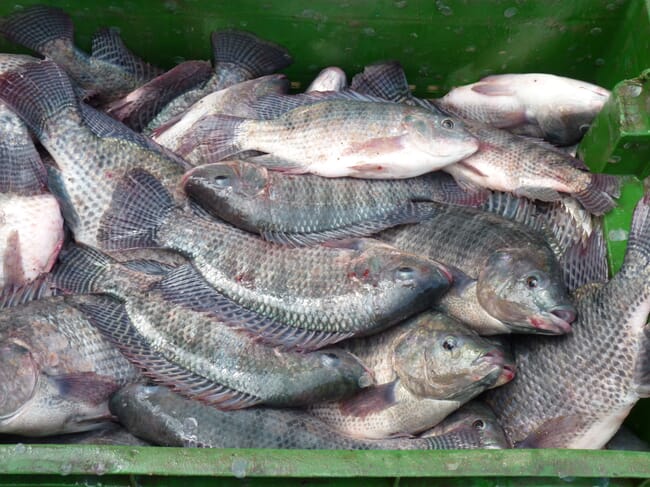
It takes 8 to 9 months for the fish to reach market size – this is slower than in some of the countries that export fish to Togo, but Akakpovi claims that his fish are better quality due to the feed used at Lofty Farm
Despite this, Akakpovi would like to move into exporting his tilapia to other countries in the region, calling on regional authorities to reduce red tape and to protect local markets against tilapia imported from Asia.
The fisheries and aquaculture sector plays an important socio-economic and political role in the sub-region, contributing more than 15 percent of the region's GDP. Togo currently has more than 14 fish farms subsidised by the authorities, with a view to promoting the aquaculture sector. The subsidised farms are generally run by aquaculture graduates from public technical schools and the subsidies include equipment as well as some direct funding to allow them to start operating their farms.
Akakpovi is also keen to help fellow farmers. “Not all places are suitable for growing this type of fish, so I am helping those who want to venture into tilapia farming with my know-how,” he reflects.


